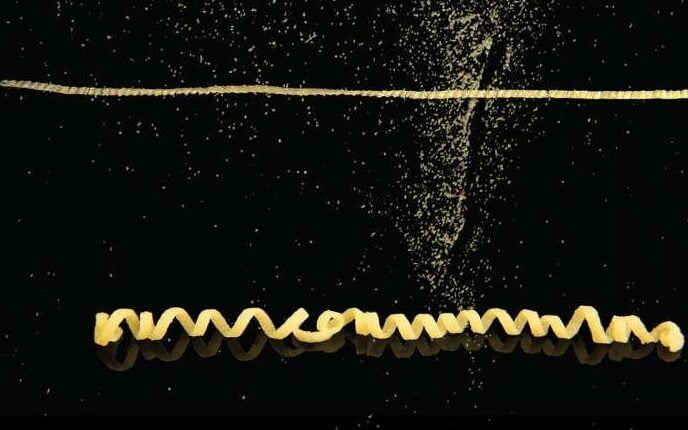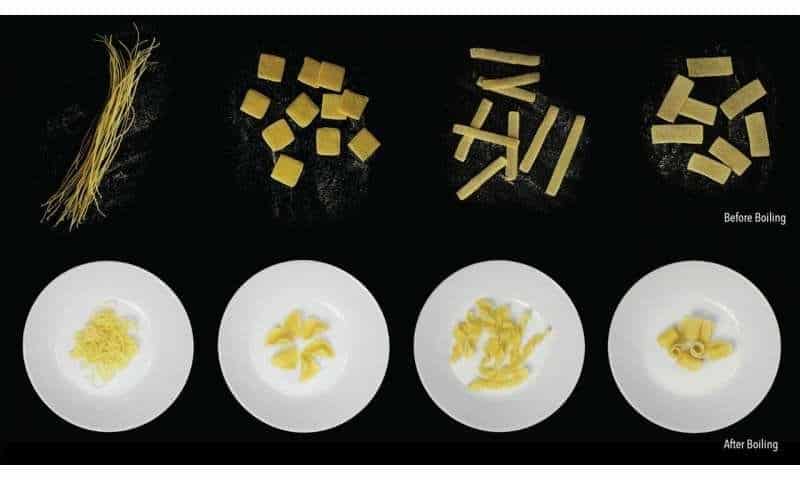I am Italian, and for me anyone who does not love pasta is a bad person. How can you not love her on the other hand? Penne, rigatoni, fusilli, shells. Each shape is a unique pleasure.
Yet even pasta has a flaw, and it is precisely in the variety of formats, which requires large packaging, and larger dimensions. A research team led by Morphing Matter Lab of Carnegie Mellon University is developing a flat pasta that takes different shapes when cooked. Practically an IKEA pasta that is “assembled” during cooking and becomes how we want it.
How morphing paste is made
The team imprinted tiny grooves into the pasta dough (made only of semolina flour and water) in patterns that cause it to transform into tubes, spirals, twists and waves once cooked.
Morphing pasta looks and above all tastes like traditional pasta. The study opens up new possibilities for food design to reduce packaging, and save space in warehouses and transport carriers.
We were inspired by flat-packed furniture and how it saves space and reduces the carbon footprint. We decided to apply the morphing technology we were developing in the laboratory on types of flat pasta with similar characteristics
Lining Yao, director of the Morphing Matter Lab
The research

The team published his vision of the morphing mechanism and design principles in a paper titled “Morphing Pasta and Beyond,” which will be featured in the May 2021 issue of Science Advances. The authors include 17 researchers from three universities: in addition to Carnegie Mellon, Syracuse University and Zhejiang University. The disciplines involved are many: above all materials science, mechanical engineering, computational manufacturing and design.
The “quick-change” pasta is based on years of research by Lining Yao and the Morphing Matter Lab on morphing mechanisms and applications with different materials ranging from plastic, rubber, fabric to food.
The grooves imprinted into the flat pasta sheets increase the time it takes for the water to cook that part of the pasta. By carefully planning where and how to place the grooves, researchers can control what the shape of the pasta will be when it is cooked.
Morphing: not just pasta
Since the morph is guided by surface grooves, it can be used to control the shape of any swellable material. For example, the team has shown that they can transform silicon sheets (PDMS) using the same technique.
This morphing technique could potentially be used in soft robots and biomedical devices
Wen Wang, a former researcher affiliated with the Morphing Matter Lab
La plastic bags of food packaging contributes significantly to worldwide landfills and pollution of the oceans. The creation of effective food packaging it is crucial to reduce waste and shape a sustainable future. Flat pasta can do its part to save transport and storage.
If it seems like a small thing to you, apart from transport, packaging and storage in Italy, about 1% of greenhouse gas emissions even depend on cooking pasta. The morphing pasta cooks more quickly than the "tubular" one, contributing also to this.


